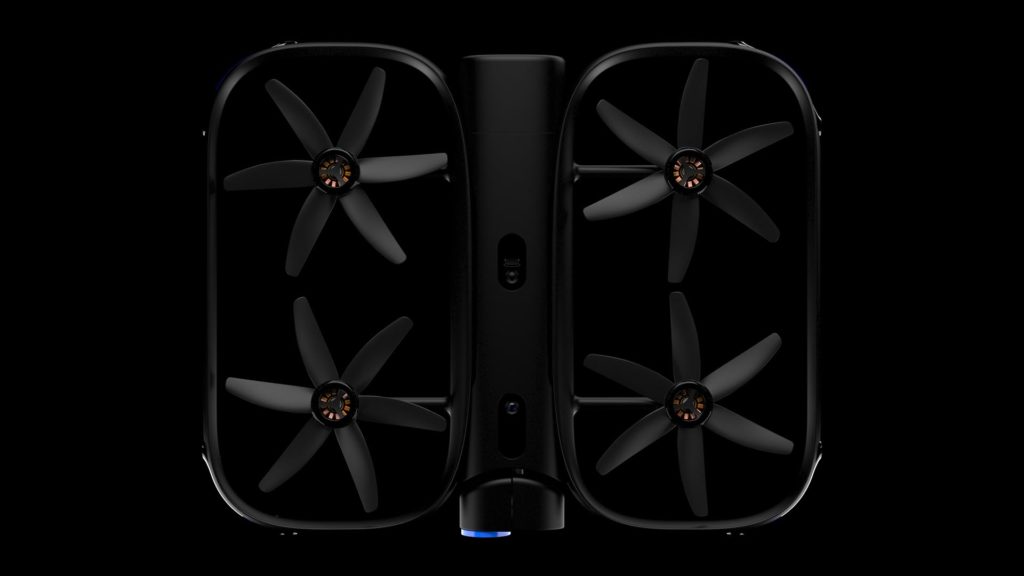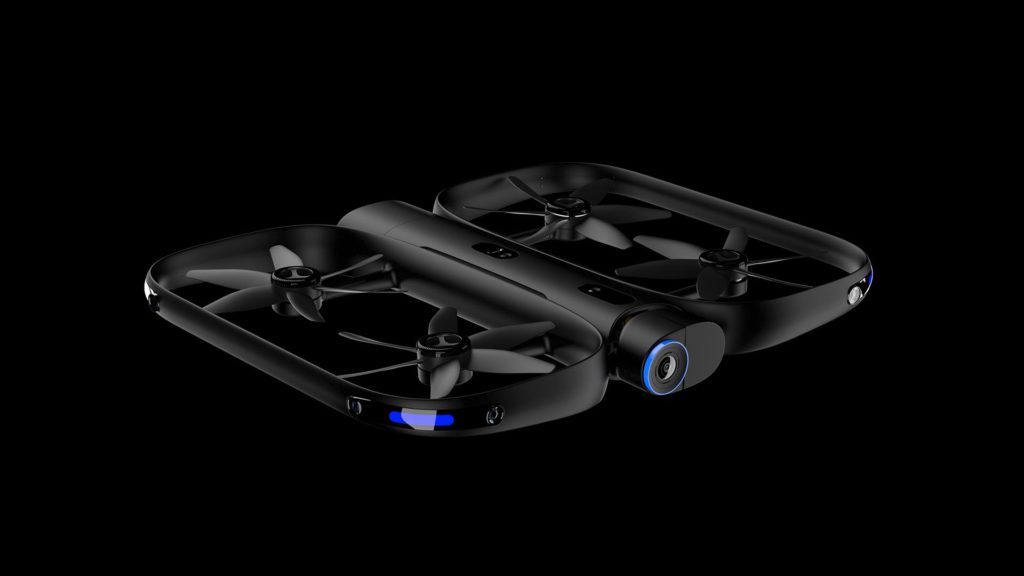It’s been a long time coming, that’s for sure. But California startup Skydio has today launched a drone that looks capable of competing at the very top of the market. Around this time in 2016, we suggested that Skydio was perhaps the drone industry’s best-kept secret. Today is the day the team unveiled what it’s been working on.
Introducing the Skydio R1
The R1 looks similar to a drone that made plenty of headlines last year, the Hover Camera. But beyond the aesthetics, it’s clear that the two have very little in common.
Our first impression of the R1 is that it’s perhaps the most technologically sophisticated drone the market has seen. The Skydio website argues as much, calling it “The most advanced autonomous device – of any kind – available today.”

That’s because the R1 is fully autonomous. It appears to be the selfie-taking, 4k-filming, flying action cam that the market has been waiting for. Instead of you sending it up and worrying about it crashing into something, the Skydio team is confident that flyers will eventually “think of it as a drone that comes with a pilot, which enables an entirely new kind of visual storytelling.”
Plenty of drone manufacturers out there have launched products with the promise of being totally hands-free. But Skydio’s R1 looks like it’s ready to deliver that and much more besides.
This new level of autonomy has been honed over a number of years by a founding team out of MIT, who concluded their computer vision research by flying a fixed-wing drone autonomously through an underground parking garage. So perhaps we shouldn’t be so surprised.
The R1 is primarily a flying camera that positions itself where it needs to be and has enough awareness of the world around it to avoid obstacles with ease and plan paths around them. Its vision system is made up of 13 cameras along its exterior and an NVIDIA Jetson chip most commonly used in self-driving vehicles.
Skydio R1: The Specs
The main specs for the R1 are:
- Size: 13”x16”x1.5”
- Weight: 2.2 lbs
- Battery life: 16 minutes each, 2 batteries included
- Top Speed: 25 mph
- Video Capture: 4k at 30fps, 1080p at 30 or 60fps with built-in stabilization
- 64GB of onboard storage
- Wi-Fi range: 300 ft, depending on phone
Skydio R1: The Price
Here’s the bad news, folks. If you want to own what looks to be the most advanced autonomous drone on the market, you’re going to have to pay for the privilege.
The R1 is available for a $2,499. Ouch.
Our Take
There’s no doubt that, from the company’s footage and a few trusted early reviews, this is an extraordinary piece of technology. As computer vision and hardware continues to develop, we may be seeing the advent of true autonomy, not just drones that stop short of obstacles or ones that can dodge a tree or two.
Having said that, in real-world conditions we don’t know how the R1 will stack up against its obvious rivals at the top end of DJI’s product range. The most recent DJI product, the Mavic Air, also stepped things up in terms of obstacle avoidance, so it’s clear that DJI is still making moves with this technology.
We’re also expecting more releases later this year from DJI, so watch this space.

What we do know for sure is that the R1 is vastly more expensive than any comparable drone on the market.
It’s not clear whether or not the R1 would be suitable for commercial environments, given that it’s been designed to follow people, not focus on particular objects. It’s also unclear to what extent it can be manually flown for something like an inspection. Or even for professional videography.
So who is this drone targeted towards? Our first impressions are that filmmakers will want more control than the R1 provides, despite the different flight modes. And many pilots will want to get behind the controls and feel like they are really pulling the strings. Which leaves us with the selfie crowd and the extreme sports folks who want to capture their exploits from above.
Whether either of those two groups is willing to spend upwards of $2,000 on a drone remains to be seen.
It will be fascinating to see if the R1 gets the appreciation from the market that this technology clearly deserves. It may be a case of a fantastic drone hitting the market a year or so too late, for $1,000 too much.
Despite our reservations over the applications and target market, Skydio’s autonomous technology could be the platform for an expanded range of drones in the future. The company has had plenty of VC investment, so let’s see how things turns out.
Either way, it’s good to see a solid product hit the market from a US company. It’s about time DJI had some serious competition.
Malek Murison is a freelance writer and editor with a passion for tech trends and innovation. He handles product reviews, major releases and keeps an eye on the enthusiast market for DroneLife.
Email Malek
Twitter:@malekmurison
Subscribe to DroneLife here.







[…] based in the U.S, with the notable exception of French manufacturer Parrot. The remaining five are Skydio, Altavian, Teal Drones, Vantage Robotics, and […]